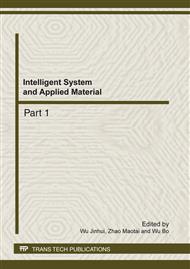p.229
p.234
p.238
p.242
p.246
p.251
p.256
p.262
p.267
Oil Spills Identification in SAR Image Using Mahalanobis Distance
Abstract:
This paper presents a method of oil spills identification in Synthetic Aperture Radar (SAR) image based on feature vector, it makes use of the advantages of SAR which can work on day and night and all weather conditions with high resolution monitoring for oil spills. Use the algorithm of Mahalanobis distance to identify the target object and gain the feature vector through evaluating SAR image of the dark area boundary. It is proved by experiment that the number of selected feature value is reasonable and more effective for estimating whether has oil spills than the traditional one. The accuracy rate can reach 96% or even more for using the algorithm of Mahalanobis distance and compare to the other methods of oil spills identification it is easy for programming implementation with less conditions .
Info:
Periodical:
Pages:
246-250
Citation:
Online since:
February 2012
Authors:
Keywords:
Price:
Сopyright:
© 2012 Trans Tech Publications Ltd. All Rights Reserved
Share:
Citation:


